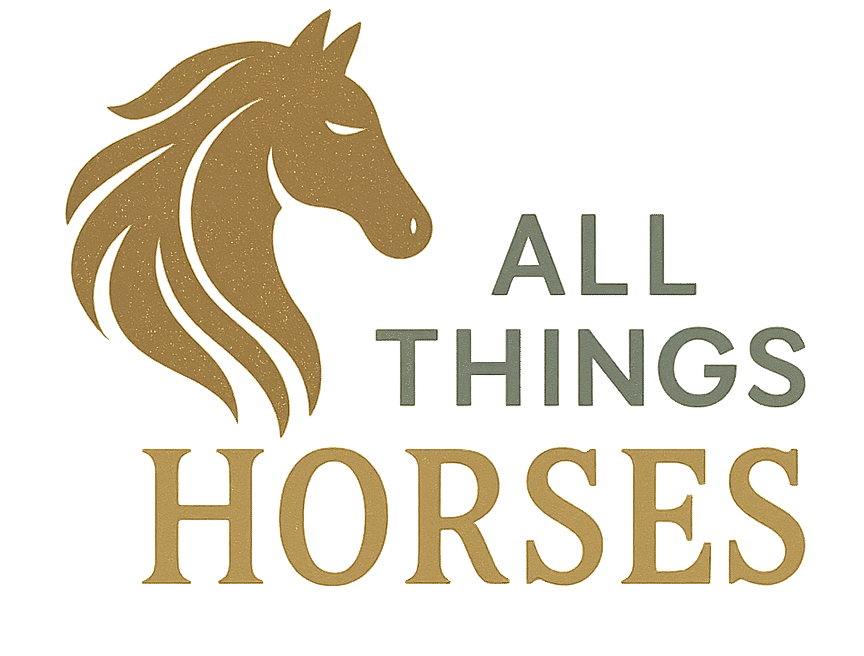If you’re raising a young colt, earning his trust is one of the best things you can do early on. A trusting relationship sets the tone for every future step, whether it’s training for riding, basic groundwork, or even just safe daily handling. Building trust with a colt is a process that takes patience, consistency, and a pretty big dose of understanding for how horses naturally think and react. Here’s my approach to helping a colt trust you more, along with some simple tips you can try no matter how much horse experience you have.

Understanding How Colts Perceive Trust
Colts don’t come into the world instantly trusting people. Their natural instincts tell them to be cautious, especially with anything unfamiliar (including you). Horses are prey animals, so your movements, tone, and body language make a huge difference in how they see you. Instead of approaching everything with force or flooding them with new things, it’s better to focus on slow, positive exposure and give your colt a chance to decide that you’re safe to be around.
Most young horses learn from watching their herd. If they see calm, relaxed behavior from you, it’s a lot easier for them to start relaxing as well. They’re pretty quick to notice any change in your mood, so keeping things consistent and predictable makes a huge difference. If you’re unsure about a colt’s signals, reading up on horse body language helps a lot. Good trust-building isn’t about showing them who’s boss; it’s more about showing them you’re a partner worth following. Slow and gentle approaches go a long way here. Horses remember the people who treat them well.
Getting Started: The Basics of Trust Building
Before jumping right into training sessions, it’s smart to start with the basics of just being present around your colt. Spending time near him, without making demands or asking for anything, shows you’re not a threat. Sometimes, the best way to start is simply sitting or standing in his field and letting him check you out on his own terms.
- Move With Calm Energy: Sudden movements or loud voices can spook a colt, so keep your approach slow and your voice soft.
- Let Curiosity Take the Lead: Give your colt the chance to come to you. If he sniffs or investigates, let him do so at his pace.
- Consistency Matters: Try to spend time at similar times of day, wearing familiar clothes, and using gentle routines so your colt learns to rely on your predictability.
I like to take a book or just hang out quietly in the pasture. At first, a colt might keep his distance, but pretty soon, curiosity takes over. Before you know it, he’s inching closer, realizing you’re not there to chase or startle him. If possible, avoid pressure and let your body language say, “I’m no threat.” Repetition is key; even a few minutes daily helps.
Step by Step Guide: Building Trust With Your Colt
There’s no fast pass with horses, but you can make steady progress by breaking down trust building into manageable steps. Here’s a process that’s worked pretty well for me:
- Start With Familiarity: Spend non demanding time near the colt. No ropes, halters, or tools—just your calm presence.
- Introduce Touch: Once your colt is comfortable being near you, begin gently touching his shoulder or neck. Keep your hand slow and steady, stopping if he gets nervous, and try again later.
- Practice Catch and Release: Occasionally approach with a halter, give a gentle rub, and walk away again. This teaches him that approaching doesn’t always mean something scary or unpleasant is about to happen.
- Work in Short Sessions: Young colts have short attention spans, so keep things brief and end on a positive note, even if that’s as simple as a calm stand and pat moment.
- Reward Calm Responses: Reward isn’t just about treats (although those help!). Calm praise, a soft word, or even just a moment of rest can make good experiences more memorable.
Going at your colt’s pace shows him you respect his feelings, and that’s a huge deal in horse language. These little wins add up, and even shy or nervous animals usually make steady progress when not pushed too fast. Celebrate each sign of improvement, no matter how minor it seems.
Common Challenges, and How to Work Through Them
Things rarely go in a straight line when working with young horses. Even after a few good sessions, you might hit a setback. That’s totally normal, so don’t get discouraged. Here are a few situations you might run into:
- Colt Is Hard to Catch: Go back to the basics. Spend extra time simply hanging out and being near him without asking for anything. If you bring food, make sure he doesn’t associate catching only with feeding.
- Jumps or Spooks Easily: Lower your energy. Instead of trying to “fix” it, stand still and let the colt take in whatever scared him. When he sees you stay calm, he’ll start to worry less, too.
- Pushy or Mouthy Behavior: Clear, predictable boundaries are your friend. Show him what’s acceptable by gently redirecting his attention and rewarding calmness.
- Backslides After Progress: Don’t rush it. Some colts test boundaries or get overwhelmed. Dial it back to easier tasks he knows; this keeps things positive and proves to him you’re trustworthy.
Personal patience is super important. Over time, the small, positive steps add up to real progress in your relationship. If you ever get stuck, step back for a day, regroup, and come back with renewed patience. Sometimes just breathing and softening your posture can make a difference.
Eye Catching Features of Positive Horse Training Methods
Positive reinforcement is gaining traction in the horse world, and I’ve noticed colts respond really well to it. Here are a few approaches worth checking out:
- Clicker Training: Using a tiny clicker to mark good behavior and then offering a treat. This builds clear communication and makes learning new things fun for your colt.
- Target Training: Teaching your colt to touch or follow an object (like a soft stick or cone) can make leading and groundwork feel like play.
- Release of Pressure: With horses, relief is the real reward. Timing your release the second the colt does what you ask will help him connect the dots quickly.
Most colts love learning like this because it gives clear signals and lots of chances to succeed. It’s also pretty enjoyable from the handler’s side. You both feel like you’re winning together. Positive reinforcement not only trains, it builds a stronger, happier bond between you and your colt in a way that’s stress free and enjoyable.
Things Worth Checking Out Before You Tackle Trust Building
Every colt is unique, with a slightly different timeline and personality. Here are some practical things to keep in mind before you get deep into trust building:
- Previous Experiences: If your colt has had a rocky start with people, expect to put in a little more time reassuring him that you’re different.
- Sensitivity Levels: Some colts are naturally bold, others are more anxious. Adjust your approach based on what you notice in your horse’s reactions.
- Consistency: Trust grows faster when everyone handling the colt is on the same page with routines and expectations.
- Environment: Little things like loud noises or new animals in the area can affect your colt’s mood. Try to start in a calm, familiar space to set him up for success.
Doing a bit of self evaluation before you start helps you tailor your approach and stay patient through the ups and downs. If you need support, ask your local equestrian community or seek out videos from trusted horse trainers who focus on trust and gentle handling.
Advanced Trust Building Tips
Ready to go beyond the basics? Here are a few next level trust building tips I’ve picked up that really help deepen the bond:
Introduce New Stimuli Gradually: Bring in something new, a tarp, plastic bag, or different person, at a distance at first. Let your colt investigate, stepping in closer only as he feels comfortable and curious. For example, walk around with a rustly jacket or let a friend walk past the paddock. Remain calm and encouraging regardless of your colt’s first reaction.
Mix in Groundwork Play: Tasks like leading through obstacle courses, backing up, or yielding his shoulders keep things interesting and help build mutual respect without harshness. Use cones, poles, or even safe toys to create confidence boosting games. The key is to watch for signs of stress and adjust as needed.
Routine “Spa Days”: Even something as simple as brushing, picking up feet, or gently rubbing ears turns daily handling into positive experiences. Reward calm postures and relaxation during grooming to increase trust. Start by touching easy spots, and work up to areas like legs or bellies to boost his confidence in your handling.
Real World Examples: Trust in Action
I once worked with a colt who spent his whole first week keeping his distance and giving me the side eye. I started by just reading near his field every day. After several days of this, he finally started coming closer and eventually let me scratch his shoulder. Those first steps led to quick progress. After a couple of months, he was following me willingly, easy to halter, and even enjoyed a bit of groundwork playtime. Watching that transformation happen is honestly one of the most rewarding things in horse training.
- Everyday Handling: Trust makes catching, grooming, and vet checks much easier for everyone involved.
- Progress In Training: Colts with a solid foundation of trust pick up on new skills with way less resistance and more curiosity.
- Emergency Situations: When a colt trusts you, safely handling surprises like a loose wire in the field or a sudden storm gets a lot more manageable for both of you.
Frequently Asked Questions
People often run into similar worries when working with young horses, so here are some answers that might help:
Question: How long does it take for a colt to trust you?
Answer: It varies a lot. Some colts warm up in days, while others might take weeks or longer, especially if they’re naturally shy or have had negative experiences with people before. Be patient, look for small improvements, and keep things low pressure.
Question: Can treats help build trust?
Answer: Yes, but in moderation. Overusing treats can lead to pushy behavior. I use small rewards for calmness or brave moments, and always pair them with praise or gentle rubs. Remember, the best rewards are built on mutual respect.
Question: What if my colt gets spooked or regresses?
Answer: That’s pretty normal. Back off to a stage your colt feels good about and progress slowly from there. Regression is just a bump along the way, not a failure. Consistency and gentle routines help ease nerves.
Wrapping Up
Trust building isn’t a one and done project. It’s an ongoing part of raising a colt. By respecting boundaries, celebrating little wins, and keeping sessions stress free, you’ll find yourself with a companion that’s happier, friendlier, and safer to be around. Stick with it, go at your colt’s pace, and you’ll both come out ahead in the long run. Eventually, your efforts not only pay off during training but also create a lifelong bond based on mutual respect and understanding.
